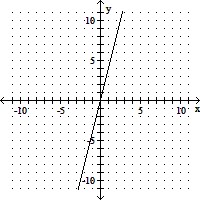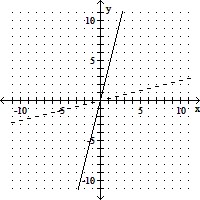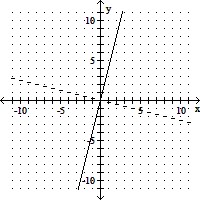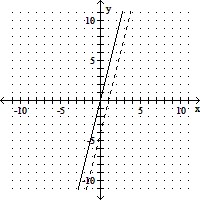Start with the given graph of y. a) Describe a sequence of transformations that results in the graph of g(x); b) Find the range of g(x); c) Find the horizontal asymptote of the graph of g(x).y = 4x; g(x) = 4-x/5
A. a) The graph of y = 4x is stretched vertically by a factor of 5 and reflected in the x-axis.
b) (-?, 0)
c) y = 0
B. a) The graph of y = 4x is stretched horizontally by a factor of 5 and reflected in the x-axis.
b) (-?, 0)
c) y = 0
C. a) The graph of y = 4x is stretched vertically by a factor of 5 and reflected in the y-axis.
b) (0, ?)
c) y = 0
D. a) The graph of y = 4x is stretched horizontally by a factor of 5 and reflected in the y-axis.
b) (0, ?)
c) y = 0
Answer: D
You might also like to view...
Evaluate the line integral. ; C is the right-angle curve from (-6, 1) to (-6, -4) to (0, -4)
; C is the right-angle curve from (-6, 1) to (-6, -4) to (0, -4)
A. 276 B. -564 C. -492 D. 204
Solve the initial value problem. = 3t + sec2 t, r(-?) = -2
= 3t + sec2 t, r(-?) = -2
A. r =  t2 + cot t - 2 -
t2 + cot t - 2 -  ?2
?2
B. r = 3 + tan t - 5
C. r =  t2 + tan t - 2 -
t2 + tan t - 2 -  ?2
?2
D. r = 3t2 + tan t - 2 - 3?2
Provide an appropriate response.Find the standard deviation for the scores: 98 97 92 93 90 92 80 85
A. 2.25 B. 15.77 C. 5.96 D. 0
The graph of the function y = f(x) is given. On the same axes, sketch the graph of f-1(x). Use a dashed line for the inverse function.
A. 
B. 
C. 
D. 